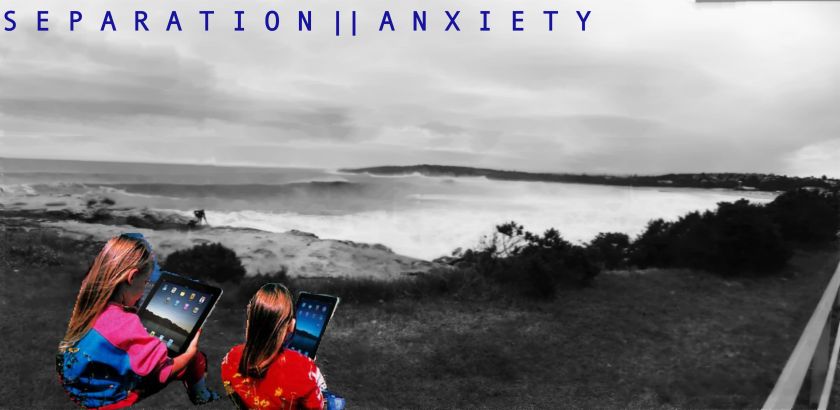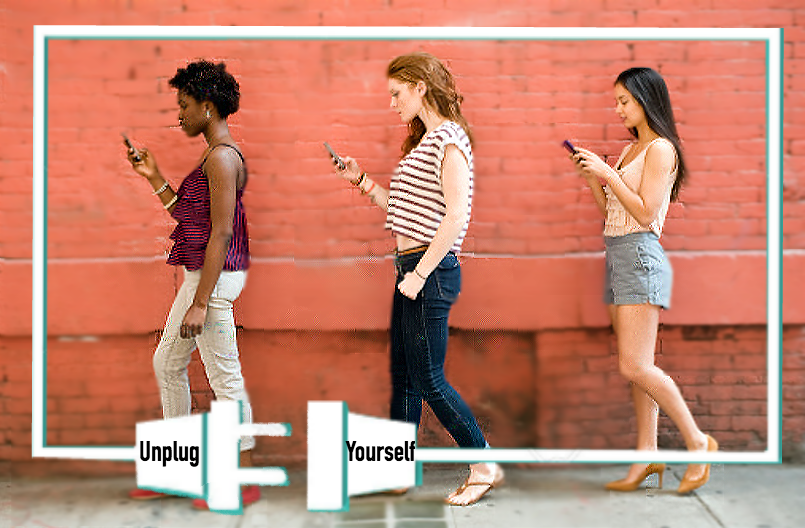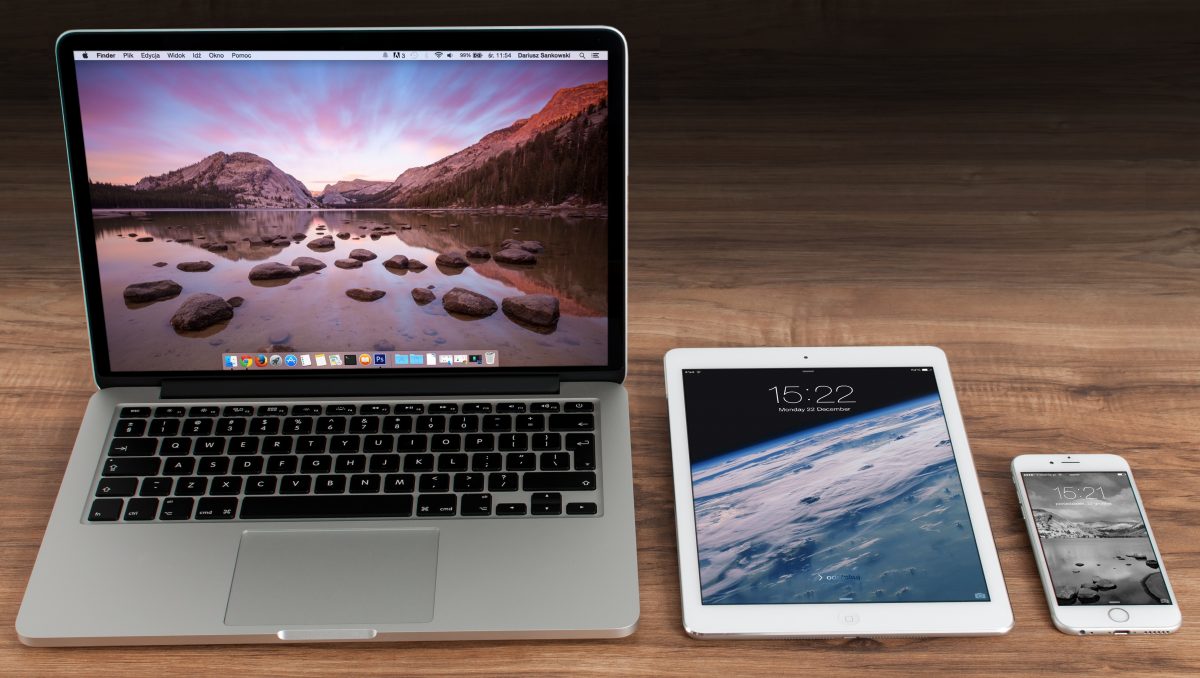

The concept of disconnection/connection is highly topical within contemporary society, especially within the last five to ten years. Technology has allowed us to both engage with the world around us and acquire knowledge in ways we never thought possible. However, this also creates problems of isolation from our immediate surroundings and can develop into a sense of ignorance or lack of awareness for what is right in front of you. My final two images will illustrate this notion and will seek to address the problems associated with becoming too reliant on personal devices. While these devices allow us to connect with those around us more in a more accessible way, it does not come without its challenges. As a result, the reasons behind the editing and manipulation of my final images will become clear and demonstrate the need to properly understand the context of a digitally literate society.
The theoretical concepts that I have chosen to explore across both images is the need to remain interactive and open minded to an individual’s immediate surroundings. Interaction is quintessential in today’s modern world, but when technology and mobile phones get in the way of this – to an unhealthy extent – people aren’t taking advantage of what is right in front of them. This is particularly evident in ‘The Work of Art in the Age of Mechanical Reproduction’ which explicitly relates to my final two images. This is because “the equipment-free aspect of reality has become the heart of artifice” (Benjamin 1970, p. 226) where reality is manipulated to create an ideal vision of the world. Moreover, the term ‘affect’ also comes into play which outlines the specific ways that various mediums such as sound and image, can emotionally impact the reader or viewer. Through this, I hope to connect the viewers to my images to further establish “the relationship between mind and body” (Hardt 2007, p. x). The reason why I chose to engage with these theories is because I wanted to emphasise the influence that technology has on our lives, and the way we deal with this on a day-to-day basis.
The first of my two images is an iPhone panorama taken at Maroubra beach in June of this year, after a heavy storm. I thought this would act as a metaphorical representation of the consequences of becoming too reliant on technology. What started out as a coloured image, soon shifted to a black and white image through the use of a grayscale filter on Pixlr. By utilising this technique, the focus would be placed on the children in the image. This would also further emphasise the innocence of the children until they become entranced in the digital world, thus ignoring the environment around them as if it was ‘blacked out’. Moreover, I cropped, layered and flipped the images of the children from Joe Webb’s original work, titled ‘Park Life’ as I felt that this would succinctly encapsulate my ideas for the topic of disconnection/connection. In one of my peer reviews, it was suggested that I also use the blurring tool on Pixlr to blur out the background of my image. In doing so, it would reiterate my point and draw the viewer’s eyes to the children enthralled in their own personal devices, such as iPads and mobile phones. I took this feedback on board and agreed that it would benefit and enhance my final piece. This in turn, also led me to using the sharpen took to establish a clear distinction between the background and the children. In terms of typography, I used the font ‘andale mono’ and purposely created spaces between each letter and word to create the feeling of ‘separation anxiety’. My final choice for the position and colour of the font as dark blue, allows the viewer to take in the image as a whole, whilst also being drawn to slight nuances within the upper frame. As a result, the image and the text are able to coincide and complement one another to illustrate the notion of ‘separation’ from reality and the over reliance on technology.
The basis for my second image was taken from Pexels and was manipulated to create my desired result. Disconnection/connection is also paramount in this image as the technological ‘production line’ of three individuals on their mobile phones is a representation of the society we have become. While phones are able to connect us with other individuals in a matter of seconds, and provide us with knowledge we never thought possible, it also hinders our ability to connect with people in real life. People become disconnected to the world around them – much like my first image – and aren’t able to create meaningful connections with various subjects, such as people and their surroundings. I therefore attempted to represent this by adding the layer of the cord on top of the original image. I also vertically flipped the cord so that it would remain in a prominent position without cutting off the top portion of the people in the image. Subsequently, I came up with the phrase ‘unplug yourself’ which works in conjunction with my chosen concepts. It reflects the need for people to occasionally detach themselves from the digital world and pay attention to the important things in life that people often take advantage of. In a recent peer review, it was also suggested that I crop the image to show them waist up, as the utilisation of the blurring tool had warped parts of the brick wall in the background. However, I chose not to go through with this as the cord would cover the hands holding the mobile phone and therefore, decrease the impact that I was trying to create.
Throughout the development of my two images, it is evident that a number of ethical and copyright issues need to be taken into consideration. The children shown in my first image highlights the ethical issue of possibly photographing children without the consent of an adult, given that they are under 18. Although, considering I cropped them from someone else’s image, one can only assume that the copyright holder has received full consent from their respective parents/guardians. Issues of copyright also come into play across both images as I have taken aspects of other people’s work to manipulate and incorporate into my own. By providing full credit to the original work, this would eliminate any further issues of copyright laws.
Through the production and development of my final images, it is evident that the concept of disconnection/connection is prevalent. This creates an ‘affect’ with the viewer and encourages them to consider their use of technology and interact with the world around them in a more engaging way.
(1119 words)
References:
Benjamin, W. 1970, ‘The Work of Art in the Age of Mechanical Reproduction’, in Arendt, H. & Benjamin, W., (eds.) Illuminations, Pimlico, London.
Bobbe, L. 2016, Portrait of Three Young Women Using Mobile Phones, Australia, viewed 12 October 2016, <http://www.gettyimages.com.au/license/507851805>.
Hardt, M. 2007, ‘Foreword: What Affects Are Good For’ in Halley, J. & Clough, C.P. (eds), The Affective Turn: Theorizing the Social, Duke University Press, Durham and London.
Webb, J. 2014, Park Life – 2014, London, viewed 6 October 2016, <https://theartstack.com/artist/joe-webb/park-life-2014>.
Peer Feedback:
http://99137628DL16.wordpress.com/ 9 October 2016
I think it’s a great idea to incorporate elements of old/new technology as well as selfie/portrait into your chosen images as they link together really well. Maybe you could also find a way to link this to the theory by either incorporating ‘affect’, or something similar into your chosen piece. This could be done by adding multiple layers and/or warm filters to create an emotional connection with the topic at hand. I also think it’s really interesting how you’ve chosen to take a selfie with the instant camera to further reiterate your ideas. This makes it very clear as to what you are conveying and you could possibly use the blank space above the camera to insert text (e.g. a phrase), in order to succinctly encapsulate your message.
https://98108107dl16.wordpress.com/ 15 October 2016
The way you have decided to incorporate the digitalisation of music and its affect on music culture is quite unique and interesting. Your prospective choice of typography is also really clever. I realise that these are not your final images, but maybe they could benefit from using some of the tools on either Pixlr or Photoshop. Maybe even adding a filter, or possibly blurring out the background on the image with the USB. This might help in drawing the viewer’s focus to the centre of the frame, thus creating the ‘affect’ you’re aiming for. As you are using children in your images, you could also mention the ethical issues/concerns that are related to this. Overall, your choice of images clearly represents what you are trying to convey and is emblematic of the changing music scene going forward.
http://12573376DL16.wordpress.com/ 23 October 2016
Your final two images succinctly explore the themes of inequality and disconnection from society; the concepts that you were hoping to achieve. I agree with your choice of making the ‘shared path’ bold and capitalised as it further enhances the impact that the Government has in terms of their influence and decision making powers. Your second image is conceptually very clever as the image and text complement one another to create the reduced access and struggle that Indigenous Australians may have with technology. However, I would suggest sharpening the edges of the phone so that it would stand out from the background and create a more seamless effect.
